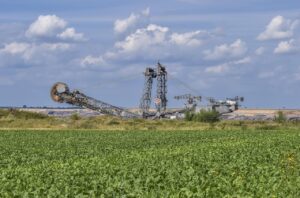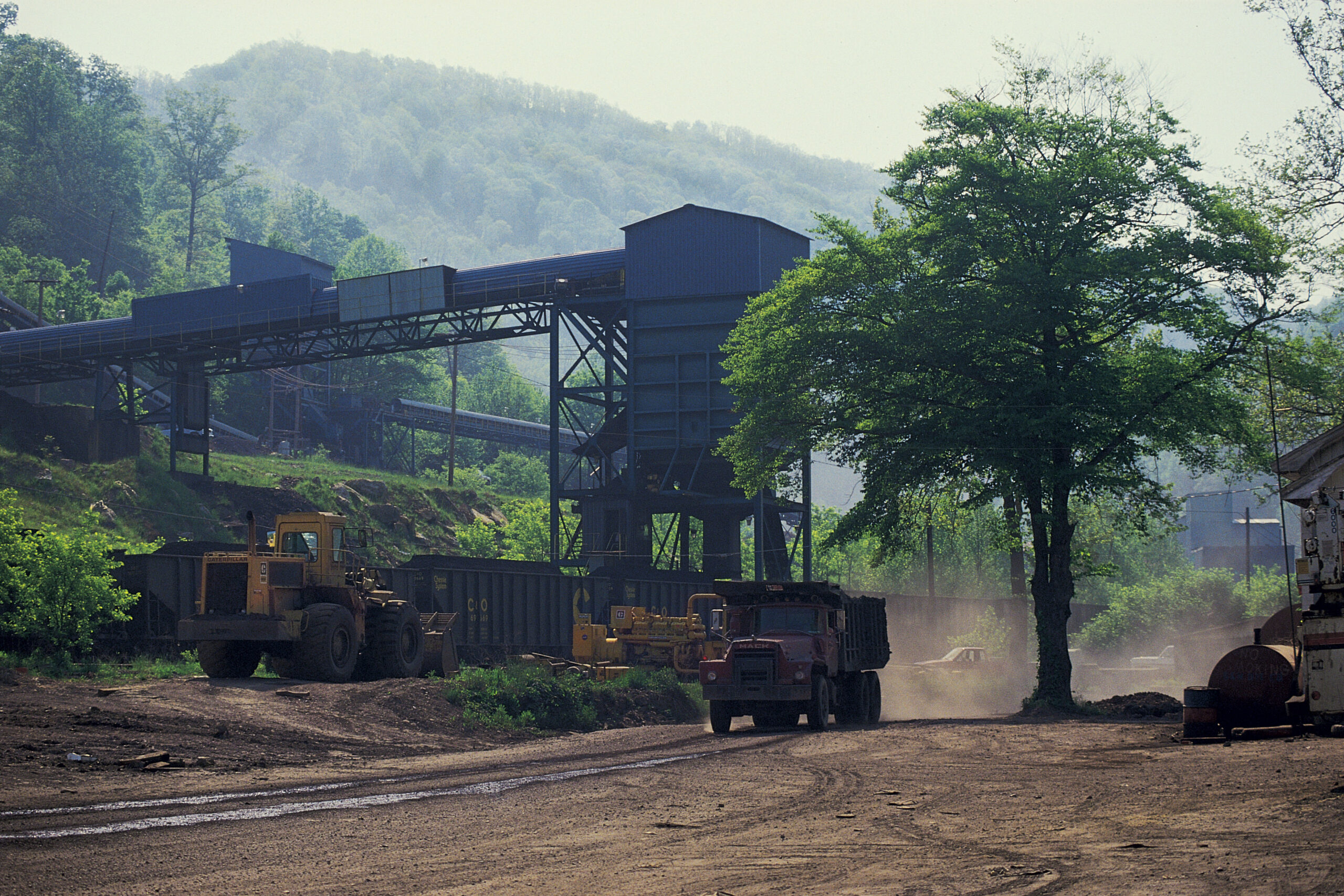Open-pit mining is a well-established technique for extracting valuable minerals from the Earth. It is often chosen for its efficiency in accessing resources near the surface and its relatively lower operational costs compared to other mining methods. This guide will provide an in-depth look at the process of open-pit mining, including its stages, equipment, challenges, and the broader impact on the environment and local communities.
What is Open-Pit Mining?
Open-pit mining is a surface mining method used to extract ore from large, shallow deposits. Unlike underground mining, which requires digging tunnels, open-pit mining involves creating a wide, terraced pit to remove ore and waste materials directly from the surface.
This method is best suited for mineral deposits that are relatively close to the Earth’s surface. It allows for more efficient extraction by accessing large quantities of ore in a short period, making it a popular choice for resources like gold, copper, iron ore, and coal.
What Geological Factors Influence the Decision to Use Open-Pit Mining?
The decision to employ open-pit mining is influenced by various geological and environmental factors, including:
- Depth of the Ore Body: Shallow ore bodies, located near the surface, are ideal for open-pit methods. The deeper the ore, the more challenging and costly it is to extract through surface mining.
- Ore Quality and Quantity: If the deposit is rich and large, open-pit mining may offer the most cost-effective solution for extraction.
- Geological Stability: Stable rock formations are crucial for ensuring that the pit can be safely dug and maintained. Unstable formations may lead to landslides or collapses.
- Surrounding Terrain: The landscape plays a role in determining how easily a mine can be accessed and whether creating a pit is feasible.
These factors are assessed during the exploration phase to determine whether open-pit mining is a viable and cost-effective method.
What Are the Main Stages of the Open-Pit Mining Process?
The open-pit mining process involves several stages, each requiring careful planning and execution:
Exploration and Planning
Before mining begins, the site must be thoroughly surveyed to identify the mineral deposit and assess the land’s suitability for open-pit mining. Geological surveys and sampling help map out the ore body, its depth, and the surrounding rock.
Land Preparation
Once the site is chosen, land preparation begins. This includes clearing vegetation and removing any obstacles like buildings or structures that could interfere with mining operations. Environmental considerations are also taken into account during this phase to ensure that the site can be restored later.
Overburden Removal
In this stage, the layers of soil and rock (known as overburden) are removed to expose the ore body beneath. This can be done using large excavators, draglines, or bulldozers. The overburden is typically moved to designated storage areas or used in the reclamation process later.
Ore Extraction
After the overburden is cleared, ore is extracted from the pit using drilling, blasting, and hauling techniques. The ore is then transported to processing plants for further treatment.
Processing
Once extracted, the ore undergoes processing to remove impurities and extract valuable minerals. This may involve techniques such as crushing, grinding, flotation, or chemical treatments, depending on the type of ore being mined.
Waste Management
The waste material, or tailings, generated during the mining and processing stages is carefully managed. Tailings are often stored in designated ponds or facilities designed to prevent contamination of local water supplies and the environment.
Monitoring and Closure
Monitoring continues throughout the life of the mine to ensure safe and efficient operations. Once mining is completed, the site undergoes reclamation efforts, including restoring the land to a stable and productive state.
How is Ore Extracted and Processed in Open-Pit Mining?
Ore extraction in open-pit mining typically involves the following steps:
- Drilling and Blasting: Once the overburden is removed, drilling equipment is used to create holes in the ore body, which are then filled with explosives. The blasting fractures the rock, making it easier to extract the ore.
- Hauling: After blasting, trucks or conveyors transport the fragmented ore to the processing plant or stockpiles.
- Processing: Ore is often crushed into smaller pieces to increase surface area for further processing. Depending on the mineral, techniques such as flotation, cyanidation, or leaching may be used to extract valuable elements like gold, copper, or iron.
The goal is to efficiently extract valuable minerals while minimizing waste and maximizing recovery.
What Equipment is Typically Used in Open-Pit Mining?
Open-pit mining requires a variety of heavy equipment to carry out different stages of the process, including:
- Excavators: Used to dig and remove overburden or ore.
- Drills: Essential for creating holes for blasting.
- Blasting Tools: Used to fracture rock and expose ore.
- Haul Trucks: Large trucks that transport ore and waste to and from the pit.
- Shovels and Loaders: Used for loading ore and waste material into haul trucks.
- Conveyors: Efficiently move mined material over long distances.
These machines are specifically designed to handle the tough conditions of an open-pit mine and contribute to operational efficiency.
What Challenges Do Mining Companies Face During Open-Pit Mining?
Mining companies face several challenges during open-pit mining operations, including:
- Safety Risks: Blasting, equipment operation, and working at great depths pose safety risks to workers. Implementing stringent safety measures is critical.
- Environmental Impact: Managing environmental concerns like soil erosion, habitat destruction, and water contamination requires careful planning and mitigation strategies.
- Resource Depletion: Over time, extracting resources can become more difficult as the pit deepens, requiring more complex operations.
- Cost Management: While open-pit mining is efficient, operational costs can rise as the pit expands, making it important to monitor and manage expenses carefully.
How Do Mining Companies Ensure the Safety of Workers in Open-Pit Mines?
Worker safety is paramount in open-pit mining operations. Companies typically implement safety measures such as:
- Training Programs: Workers undergo comprehensive training in the safe operation of equipment and handling of hazardous materials.
- Protective Gear: Workers are required to wear personal protective equipment (PPE) like helmets, gloves, and safety vests.
- Regular Inspections: Routine inspections are conducted to identify potential hazards and ensure equipment is in safe working condition.
- Emergency Response Plans: Plans are in place to quickly address any accidents or disasters, including evacuation procedures and medical support.
How is the Environmental Impact of Open-Pit Mining Managed?
The environmental impact of open-pit mining is managed through various strategies:
- Reclamation: Efforts are made to restore mined land to its natural state, including replanting vegetation and stabilizing soil.
- Water Management: Water runoff is carefully managed to prevent contamination and erosion.
- Dust Control: Dust suppression techniques like water spraying are used to reduce air pollution.
By following environmental regulations and adopting responsible practices, mining companies can minimize their impact on the surrounding environment.
What are the Advantages of Open-Pit Mining?
The process of open-pit mining offers several advantages, including:
- Cost Efficiency: Open-pit mining is typically less expensive than underground mining, making it a more viable option for extracting near-surface ores.
- Safety: Since workers operate on the surface, they face fewer risks compared to underground miners.
- Large-Scale Operations: Open-pit mines can be expanded as needed to accommodate large volumes of ore, increasing productivity.
- Environmental Considerations: Although there are environmental concerns, open-pit mining allows for easier management and reclamation compared to underground mining.
What are the Long-Term Impacts of Open-Pit Mining on Local Communities?
The long-term impacts of open-pit mining on local communities can vary:
- Economic Growth: Open-pit mining can stimulate local economies by providing jobs and infrastructure.
- Displacement: Communities near mining operations may be displaced or affected by noise and air pollution.
- Environmental Degradation: If not properly managed, mining can result in long-lasting environmental damage, affecting water quality and local ecosystems.
- Social Effects: While mining creates jobs, it can also lead to social disruption, such as population shifts and increased cost of living.

Open-Pit Mining and Its Evolving Practices
Open-pit mining continues to be a vital method for extracting minerals essential for modern industries. While it offers significant benefits in terms of efficiency and cost, it also presents challenges, especially in terms of environmental and community impacts. By adopting advanced technologies and adhering to strict regulations, the industry can evolve to reduce negative consequences and improve the sustainability of its operations.
Open-pit mining is a surface mining method used to extract ore from large, shallow deposits. Unlike underground mining, which requires digging tunnels, open-pit mining involves creating a wide, terraced pit to remove ore and waste materials directly from the surface.
This method is best suited for mineral deposits that are relatively close to the Earth’s surface. It allows for more efficient extraction by accessing large quantities of ore in a short period, making it a popular choice for resources like gold, copper, iron ore, and coal.

